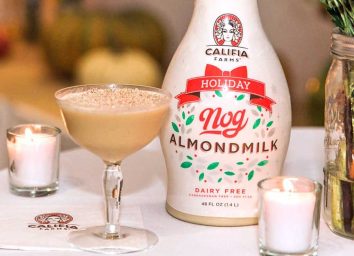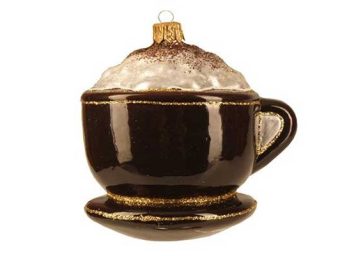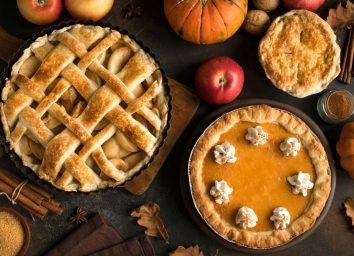6 Christmas Carols with Foods You've Never Actually Eaten
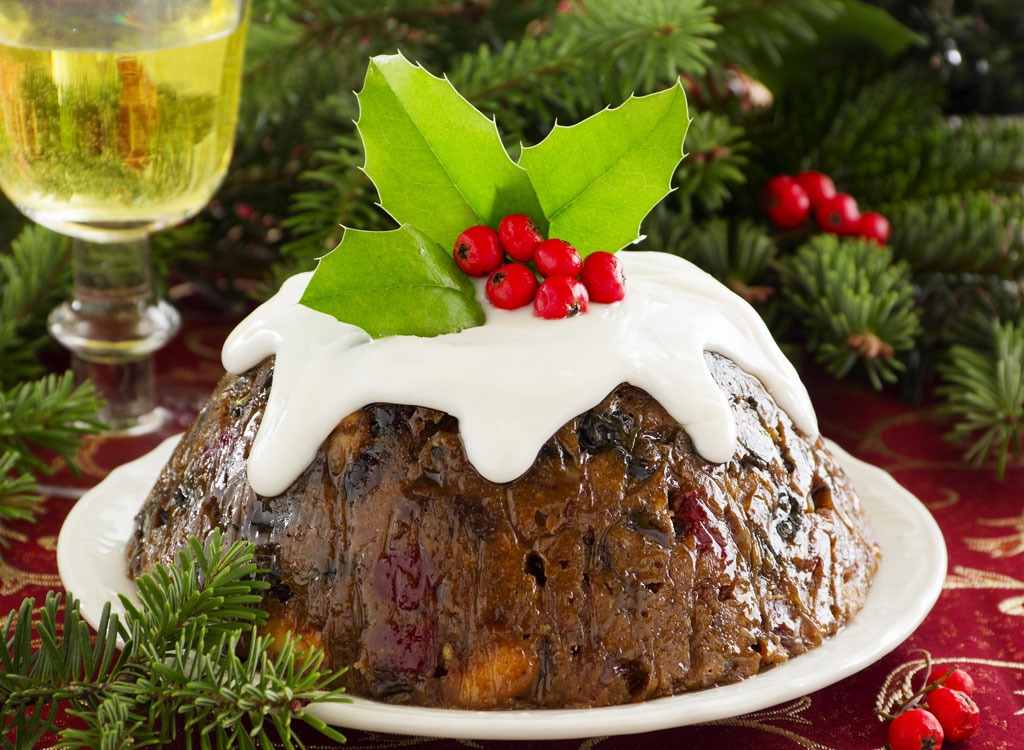
Like many festive Americans, I always warm up some hot chocolate and put on a Christmas playlist while decorating my Christmas tree. Between stringing the lights and carefully placing on ornaments, this year my boyfriend and I got into a little Christmas carol karaoke battle. After he belted out a round of All I Want For Christmas Is You, it was my turn. The Christmas Song came on (one of my all-time favorites), and I launched into my rendition (admittedly off-tune) of the wintertime classic. But after the first stanza, I stopped myself.
"Have you ever roasted chestnuts over an open fire?" I asked my boyfriend. After an eye roll paired with a sigh, he responded no and encouraged me to keep singing. I obliged, but my curiosity didn't entirely disappear.
While he was nestled all snug in his bed, visions of roasted chestnuts and sugar plums danced in my head. And hold on a second—what are sugar plums?! Now on a mission, I grabbed my computer and excitedly looked up what these foods were. It wasn't just these two Santa snacks that I had sung of but never eaten. There are countless Christmas carols that croon of outdated delicacies. If you're just as curious as I was or just want to win a round of Christmas trivia at your holiday office party, check out these Christmas carols with foods you've never actually eaten. (Plus, discover the story behind why they don't appear in our modern holiday spread!) Check 'em out and then don't forget to find out the 12 Ways to Eat Whatever You Want During the Holidays, too!
Figgy Pudding
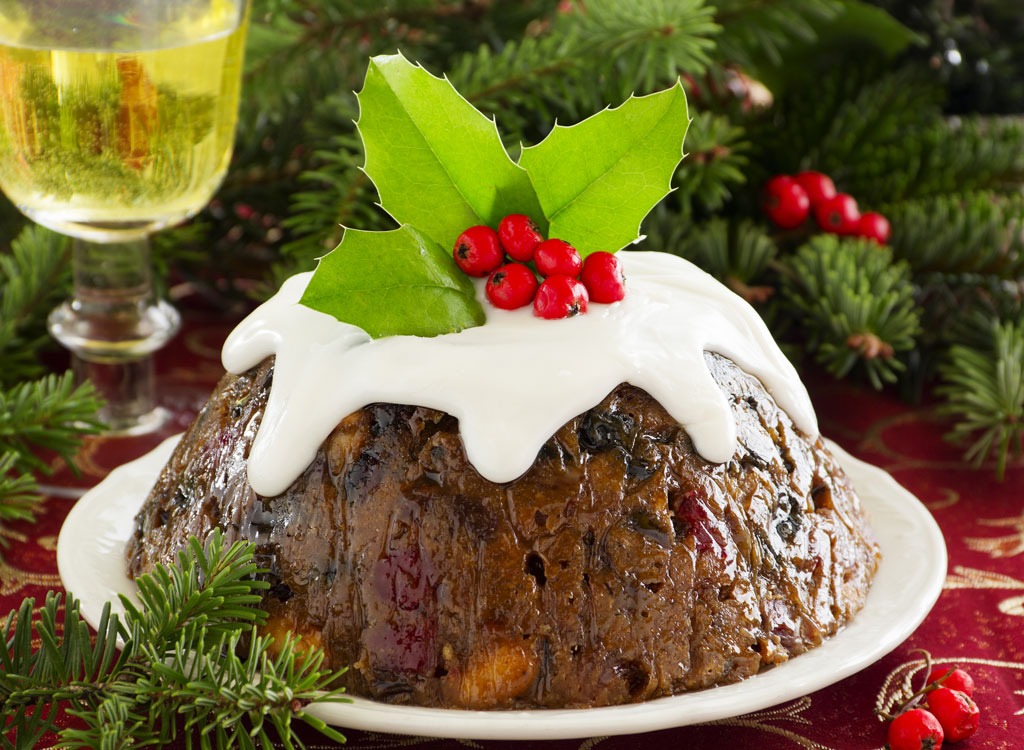
We Wish You a Merry Christmas
Oh, bring us a figgy pudding;
Oh, bring us a figgy pudding;
Oh, bring us a figgy pudding and a cup of good cheer
Surprise! Figgy pudding neither resembles the gelatin vanilla or chocolate pudding you're used to, nor does it contain real figs. (That's probably a good thing since figs rank high on our list of 25 Popular Fruits—Ranked By Sugar Content!.) It's also known as "Christmas Pudding" or "Plum Pudding"—but there are no plums, either. According to NPR, "The 'plum' was a pre-Victorian generic term for any type of dried fruit, but most specifically, raisins." It's also called a pudding in the British sense (i.e. it's a dessert), not in the American sense that's known as gelatin. Specifically, figgy pudding is a steamed cake made with 13 ingredients (for Christ and the 12 apostles)—including raisins, currants, suet (raw beef or mutton fat), and lots and lots of brandy. It was traditionally made weeks ahead of Christmas as the alcohol would essential act as a preservative and help draw out more flavors.
Wassail
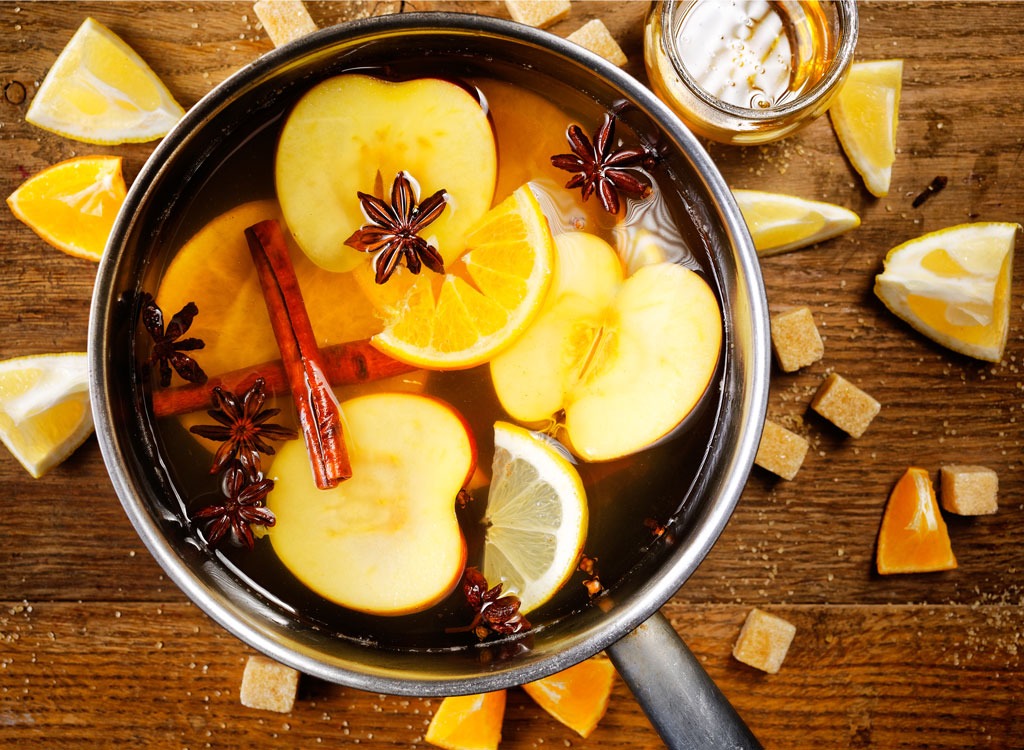
Here We Come A-Wassailing
Our wassail cup is made
Of the rosemary tree,
And so is your beer
Of the best barley
Although you probably haven't had a traditional cup of wassail, you've likely had something quite similar—mulled cider. The name for the drink came from a greeting, "Waes hael," meaning "Be well." It's what people would say while they held up a mug of spiced cider to toast to a good cider apple harvest for the following year. In Shakespeare's time, wassail was a mulled punch that was made by boiling mead (an alcoholic beverage brewed with honey) with crab apples. Eventually, the drink evolved to be made with sugar, spices, apple cider, eggs, brandy, oranges, and topped with slices of toast. Speaking of toast, have you seen these 20 Best & Worst Store Bought Bread Brands?
Sugar Plums
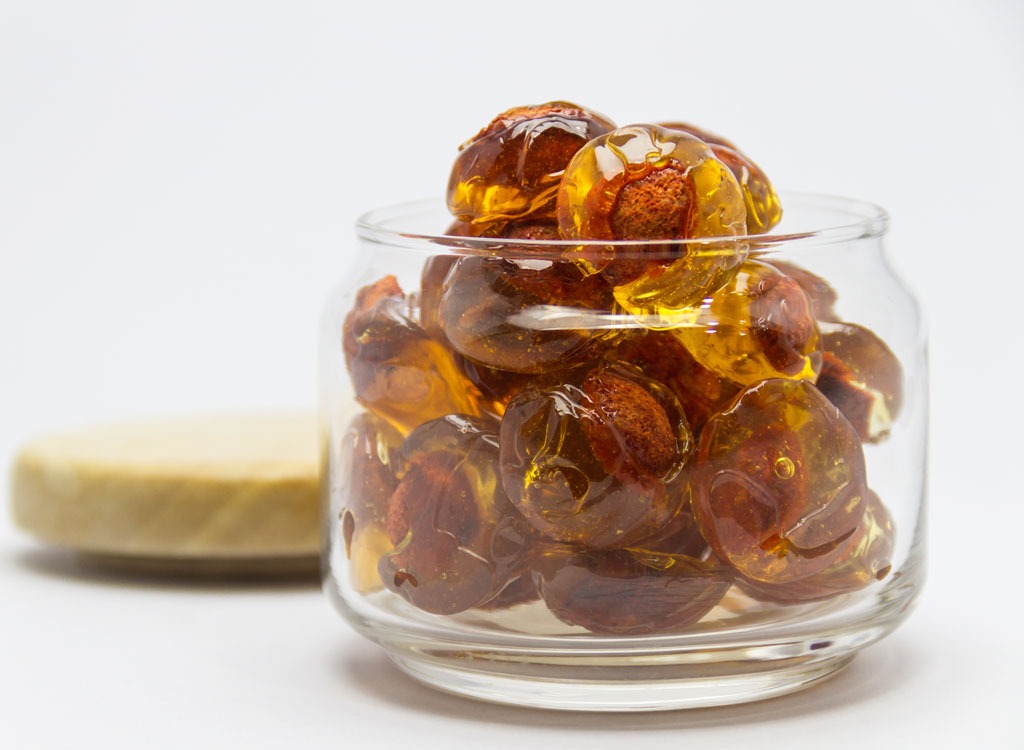
Dance of the Sugar Plum Fairy
If you could hazard a guess as to what sugar plums were, you'd likely probably guess that they're those purple pieces of gummy candy or sugared plums (the actual fruit)—but you'd be wrong. Sugar plums are not plums, but they are sugar. The now obsolete term refers to a type of candy called "dragee" or "comfit," according to The Oxford English Dictionary. It's a sweet made from layers of sugar hardened around a central seed, nut, or kernel—like a modern-day jawbreaker. Traditionally, sugar plums would be made with either an almond or a caraway or cardamom seed at the center. The "plum" part of the candy likely refers to the fact that the sweet was a similar size and shape of the fruit. (P.S. Did you know that eating plums is one of the 14 Ways to Lose Your Belly in 14 Days?)
Chestnuts
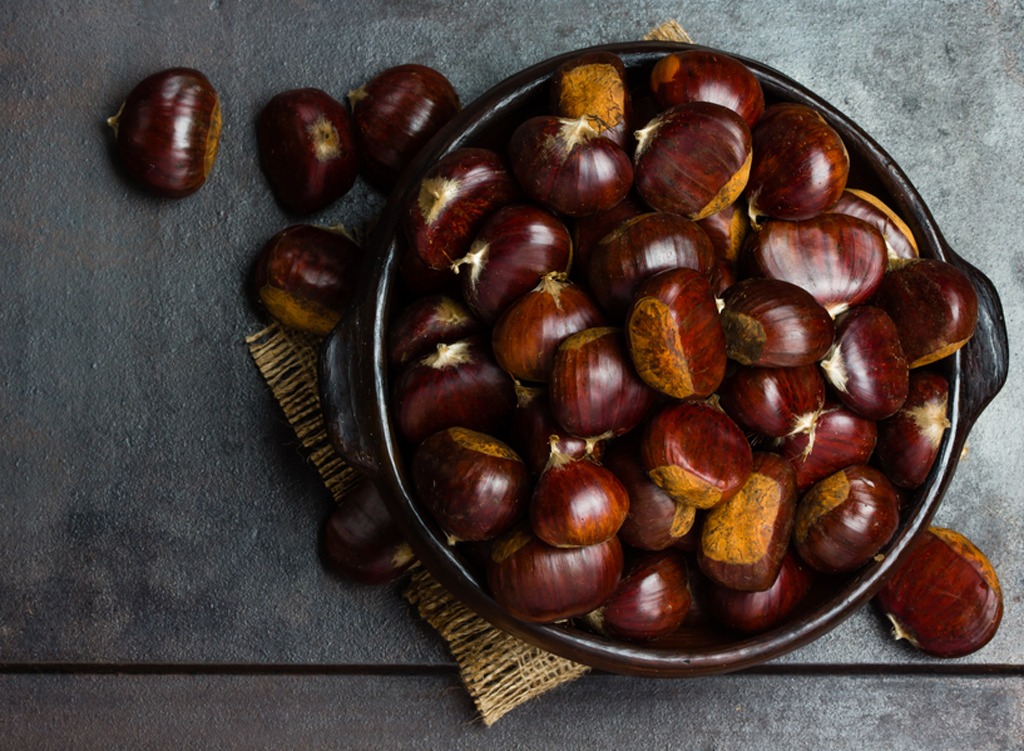
The Christmas Song (Chestnuts Roasting On An Open Fire)
Chestnuts roasting on an open fire
Jack Frost nipping at your nose
Yuletide carols being sung by a choir
And folks dressed up like Eskimos
Sleigh Ride
We'll be singing the songs
We love to sing without a single stop
At the fireplace while we watch
The chestnuts pop; Pop! Pop! Pop!
We don't know about you, but our pantries are mostly filled with already-shelled almonds, cashews, and walnuts—not chestnuts. According to a 2006 story published in the magazine Performing Songwriter, the "chestnuts roasting on an open fire" lyric was inspired by songwriter Bob Wells's childhood in Boston: He remembered when street vendors used to serve up paper cones full of roasted chestnuts around Christmas.
It makes sense that it was inspired by his childhood, considering his song (The Christmas Song), as well as Sleigh Ride, were written in the 1940s—right before the American Chestnut species went extinct after succumbing to a blight that started in the early 1900s, according to the U.S. non-profit American Forest Foundation. That explains why you don't see the sidewalk snack as much. If you ever do see chestnuts, they're likely imported from Italy. Want another leg up in the trivia world? Read up on these 11 Italian Foods They Won't Eat In Italy.
"Pudding"
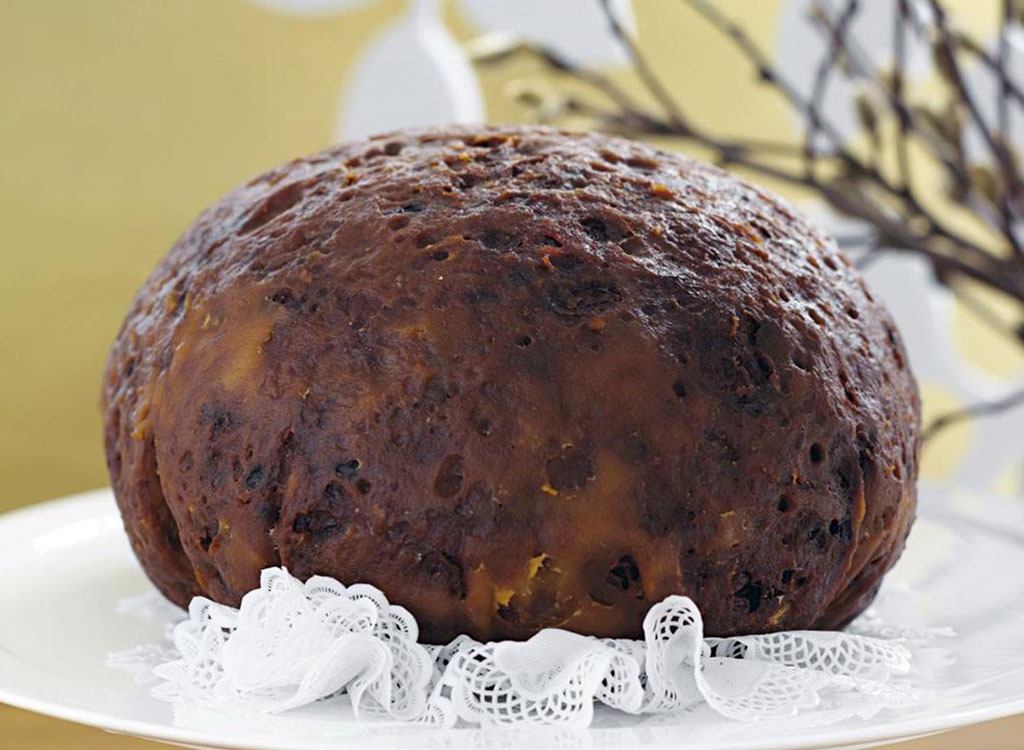
Image courtesy of foodtolove.com.au
Over The River And Through The Woods
Over the river and through the woods,
Now Grandmother's cap I spy!
Hurrah for the fun! Is the pudding done?
Although the word sounds familiar, you likely haven't eaten the kind of pudding Lydia Maria Child was referring to in her 1845 poem, "The New-England Boy's Song About Thanksgiving Day," which evolved into a Christmas song in the 1870s. (Here's a fun fact: The reason Child talked about sleigh rides through the snow at Thanksgiving was because New England in the early 19th century was enduring a Little Ice Age that had earlier winters.)
Just like in "We Wish You a Merry Christmas," Child was likely referring to figgy pudding. But unlike the more recent evolution of figgy pudding that you saw in the first song—which is made in a pudding basin—by the looks of the illustration that accompanied the 19th-century poem, this round pudding was made in a cheesecloth bag that was "boiled for several hours in a pot," as detailed in the History of American Cooking by Merril Smith.
Goose
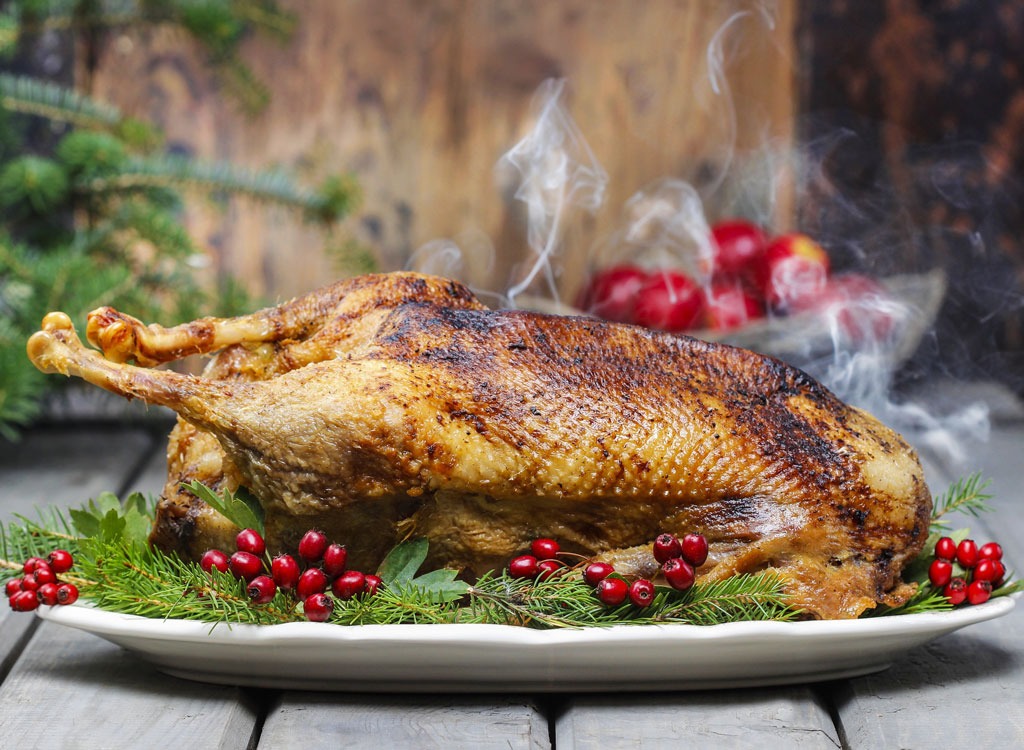
Christmas Is Coming
Christmas is Coming, the goose is getting fat
Please put a penny in the old man's hat
We're used to eating turkey and ham on Christmas day, but people used to eat goose (and some still do!). The lyrics are referring to the fact that farmers wouldn't harvest a goose until after freezing weather (which is associated with Christmas time). When geese are exposed to cold weather, they start putting on a layer of fat that keeps it warm but also makes it taste better. We don't eat goose as much now because the animal has a preference for grazing, which makes it harder to raise them in factory farm conditions. It's much more likely that you'll enjoy turkey for your holiday feast—in which case, we suggest you bookmark this list of 30 Things to Make with Leftover Turkey!
